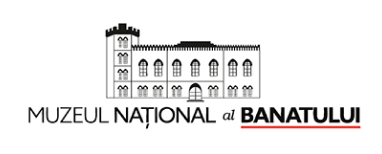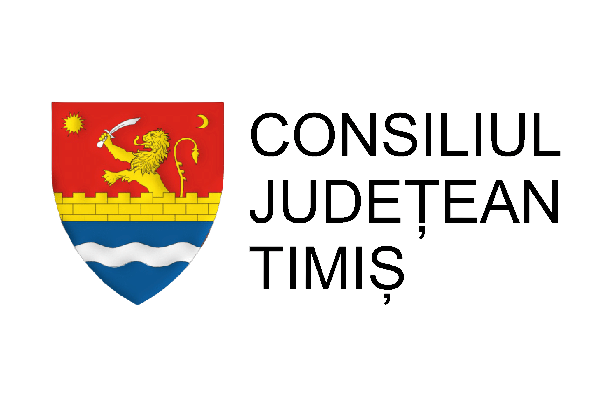The mission of the National Museum of Banat is to research, preserve and restore the cultural, material and intangible assets of the historical Banat, to highlight, make accessible and disseminate scientific information for the purpose of educating and recreating the public. Through its activity, the Banat Museum contributes to the knowledge and promotion of the material and spiritual testimonies of the existence and evolution of the human community and the environment in the western part of Romania and in the neighboring regions.
Vision :
The Banat Museum will assert itself as a museum of national importance, contributing to the development and consolidation of local and regional identity in a national and international context, constituting, par excellence in the complex museum activity, a cultural landmark in the West.
Values:
In the professional activity:
- excellency
- interdisciplinarity
- assuming ethical and professional standards
- teamwork
- recognition of personal merit
In relations with the professional environment and the public:
- transparency
- continuing education
- diversity in programs and approaches
- accessibility to heritage
- co-responsibility in heritage conservation
The representative collection of the Banat region consists of 4528 samples. It includes rocks and minerals specific to the iron area from the ancient Banat centers, Ocna de Fier, Dognecea, as well as from the Baia Mare area. The paleontological material includes samples from Banat deposits, the best being the Mesozoic era (end of the Cretaceous period) and the Neozoic era.
The Zonal Restoration and Conservation Laboratory within the National Museum of Banat in Timișoara was established in 1975.
From the very beginning, it was one of the most important and largest profile laboratories in the country, with sectors specialized in the restoration and conservation of metals, ceramics-glass-porcelain, old-paper-paper, painting, textiles, stone and wood-furniture, archeological. It was staffed by 32 restorers and investigators.
In the 46 years since its establishment, the laboratory specialists have restored and preserved, in many cases, saved tens of thousands of objects from the national cultural heritage, from all historical epochs and from all typological categories, many of them being classified in the category Treasure. The beneficiaries were museums, churches and religious denominations, other institutions as well as private individuals from Timişoara, Banat and Crişana area, but also from the country.
Currently, the laboratory has high-performance equipment, used in scientific research for analysis for the reunification of cultural assets. These are: XRF Portable Bruker Tracer 5i, ZEISS AXIO Imager A2m Microscope; which identifies the chemical composition of objects.
The resulting scientific documentation is a valuable database for interdisciplinary research of cultural heritage, in many cases it is the basis for research in history, archeology or art.
The applied, specific scientific research has materialized in numerous participations in national and international sessions, in the country and abroad, as well as with the publication of numerous works in the volumes of museums from all over the country.
Due to the special professional quality, several specialists of the laboratory were asked to participate in various national restoration and conservation actions.
The specialists of the laboratory obtained from the Ministry of Culture the title of expert, respectively of specialist in the restoration and conservation of the heritage, a quality that gives them the right to intervene on cultural goods classified in the Treasury category.
Unfortunately, after 1990, the space of the zonal restoration laboratory was gradually reduced, reaching that today, the sectors of paper - old book-binding, metals, ceramics and wood - furniture, archeological to be dispersed in several locations.
Old Paper-Book Restoration
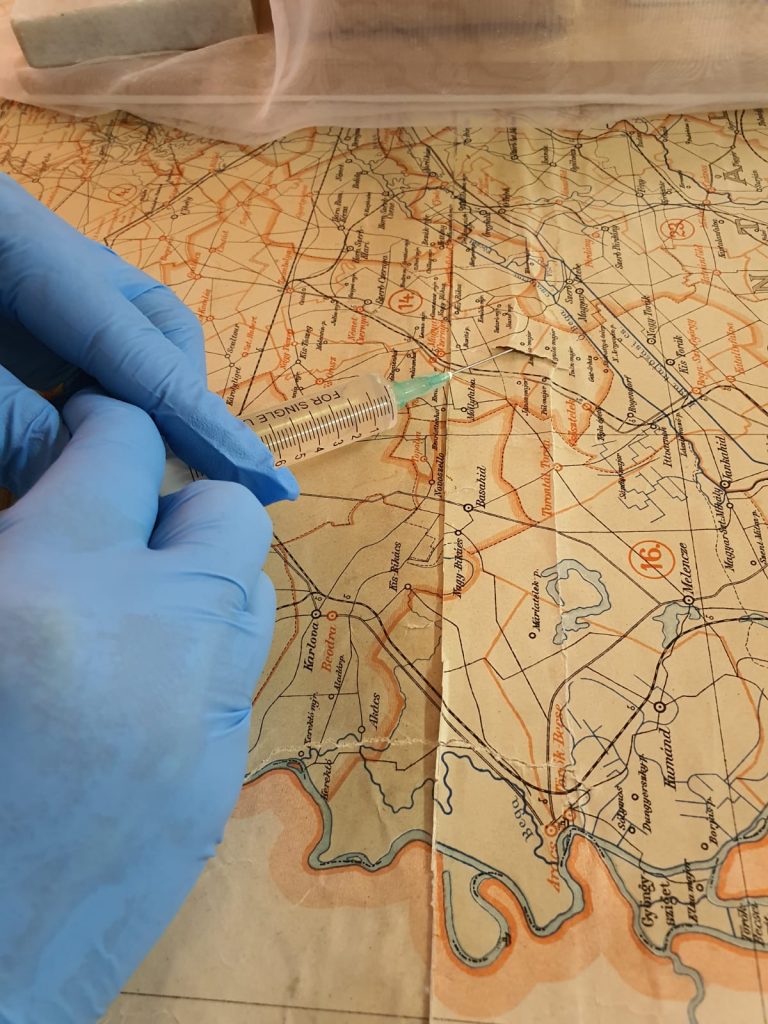
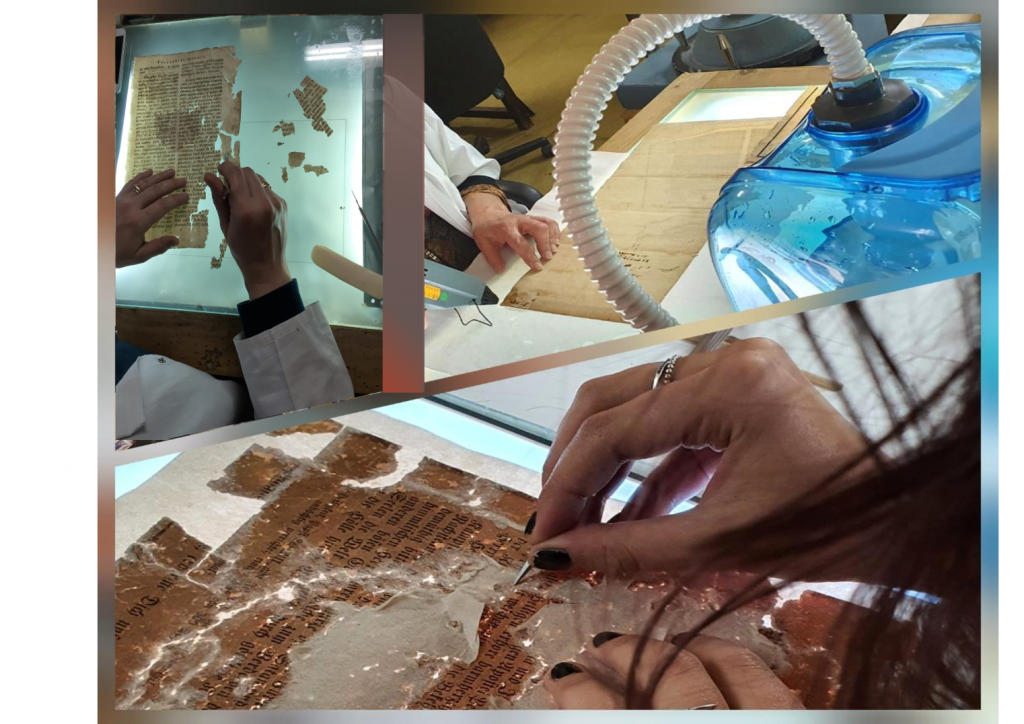
Metal-Ceramic Restoration
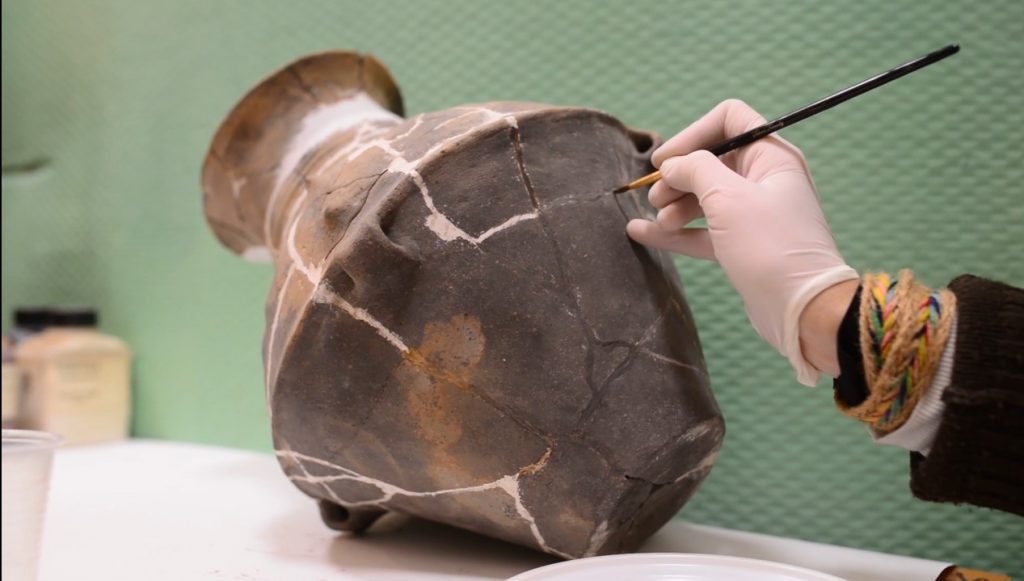

Restoration of Wood- Archaeological Furniture
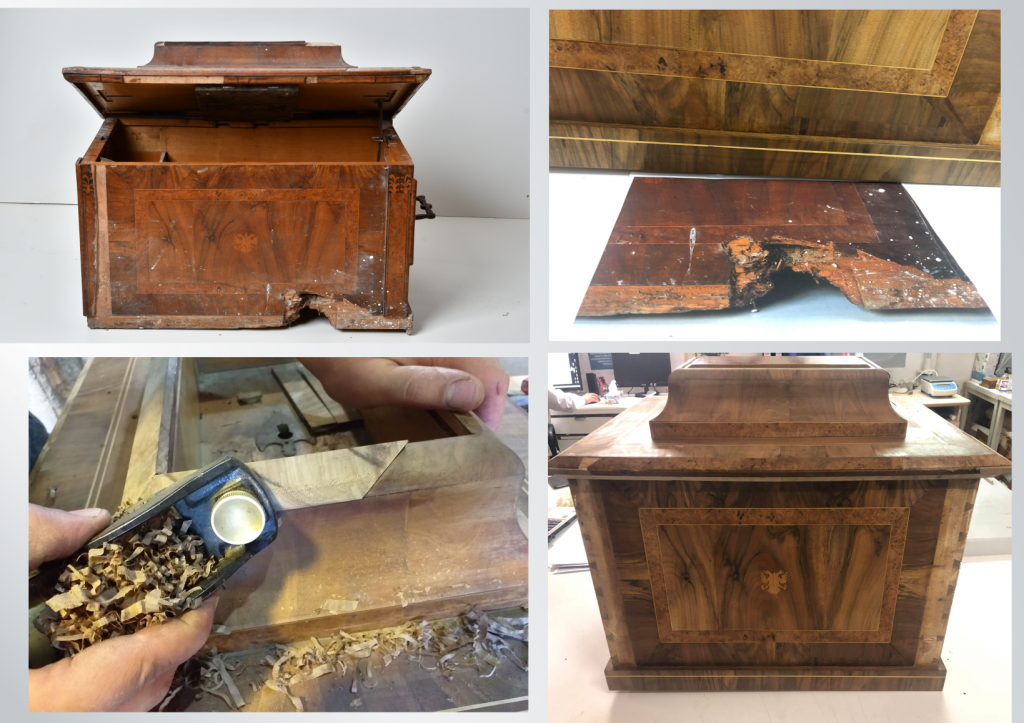
Preventive conservation
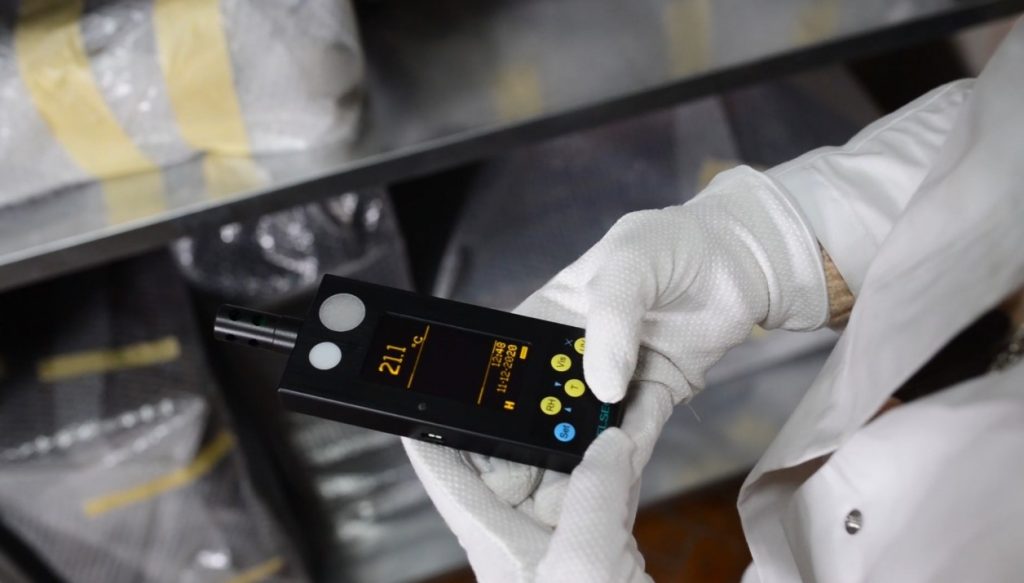
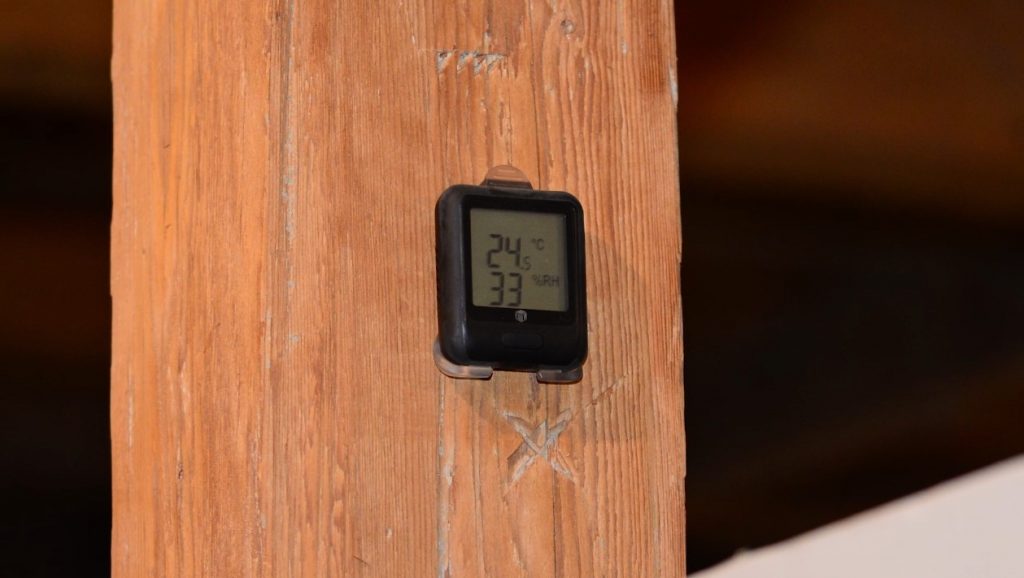
Chemical-physical investigations
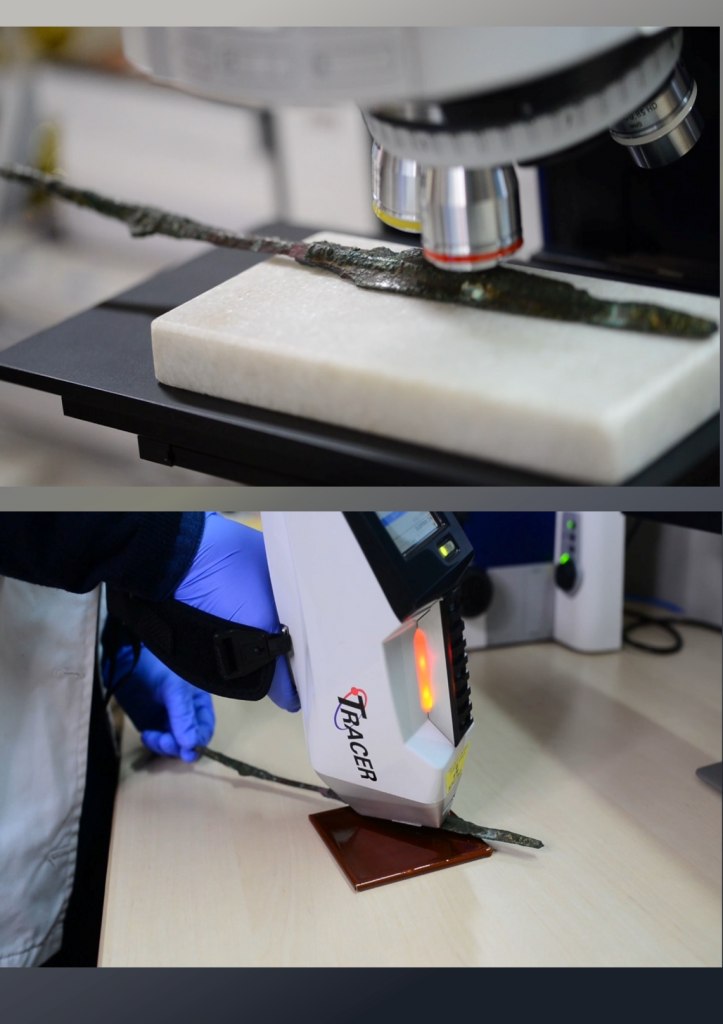
Following the establishment on July 25, 1872 of the Society of History and Archeology of Banat, on the initiative of Zsigmond Ormós, the foundations of the Banat Museum were laid, which donated a large part of the objects from the personal collections to the new museum. The first heritage items to enter his inventory were initially stored in a room in the Palace of the Episcopate of Cenad. The objects of the museum came from donations, accidental archeological discoveries and acquisitions.
In 1876, with the support of the prefect of Timiș County, the Ormós Zsigmond Society of History and Archeology of Banat received two rooms in the Wellaner House, on Lonovics Stadium, the museum's headquarters until the interwar period.
The official opening of the Banat Museum to the public took place in 1877. During this period, the museum's patrimony increased rapidly.
In 1879, a special Museum Society was established, which was to deal exclusively with the activity of the Banat Museum. This new cultural society was unified in 1884 with the Society of History and Archeology, thus creating the Museum Society of History and Archeology.
Since 1887, the Wellaner building has been undergoing general repairs, works that lasted several years, the patrimony of the Banat Museum being housed during all this time in the building of the old prefecture. In 1888, the building of the Museum Palace was completed (today the Library of the Romanian Academy, Timișoara branch), a building that proved to be too small from the beginning to house the collections of the Banat Museum. In 1889 the Banat Museum was reopened to the public. At the beginning of the last decade of the 19th century, the museum had the following collections: archeology and ancient history, art gallery, natural sciences, library and archive. In 1892 it was decided to set up a decorative art department. The year 1893 marked for the history section the moment of the beginning of some specialized archeological excavations, which continued throughout the following decades.
In 1896, the Banat Museum participated in the Universal Exhibition in Budapest with several objects, winning a bronze medal and a diploma of thanks.
Szentkláray Jenő, Berkeszi István Pontelly István, Patzner István, Deschán Achill or Kabdebó Gergely had an important activity in organizing the museum.
With the integration of Banat into the Romanian national state (December 1, 1918), the Museum of Banat entered a new period.
An important activity in order to reorganize the museum was held by Emanuil Ungureanu, who in the interwar years held the position of cultural inspector of the city of Timișoara. The museum faced the lack of space throughout the interwar period. Despite all these difficulties, the museum has increased its collections, an important role in the smooth running of the institution being played by Joachim Miloia, Dionisie Linția, Aurel Ciupe, Marius Moga. The wooden churches in Banat were researched, scientifically organized archeological weeks took place (coordinated by the famous historian Constantin Daicoviciu), the collections of natural and art were enriched by the entry into their patrimony of some very rare pieces. At the same time, the Banat Museum participated in a series of exhibitions organized in the country and abroad.
The Second World War hampered the smooth running of the Banat Museum. Evacuated due to the bombings, many of the pieces of the Banat Museum were stolen by Soviet troops in Timișoara (after the World Heritage in the First World War suffered from the Serbian military occupation and the Hungarian authorities).
In 1948, the Banat Museum was transferred to the Huniazilor Castle in Timișoara. After 1950, the museum's collections were enriched with valuable pieces. Some of these were deposited in the Church of the Mercy, disused for religious service.
Until January 1, 2006, the Museum of Banat Timișoara included the following sections: History Department, Natural Sciences Section, Art Section, Ethnography Section, as well as the Zonal Restoration-Conservation Laboratory, constituting a cultural institution of reference in Banat. From January 1, 2006, the Art Department becomes an independent institution with the name of “Timișoara Art Museum”, the first director of the new institution being prof.univ.dr. Marcel Tolcea.
In July 2006, the Ethnography Department was transferred to the Timișoara Village Museum, on which occasion the renowned ethnologist Andrei Milin, the former head of the Ethnography Department, was appointed director of the Village Museum.
History in time
- 1872 - At the initiative of the great man of culture Ormós Zsigmond, the prefect of Timiş County and a group of intellectuals, on July 25, 1872, the first scientific society in Banat was established, called the Society of History and Archeology, which aimed to establish a historical museum. -archaeological in Timisoara. The first heritage items recorded in his inventory were originally stored in a room in the Palace of the Episcopate of Cenad, which came from donations, accidental archeological discoveries and acquisitions.
- 1876 - With the support of the prefect of Timiş County, the Society of History and Archeology of Banat received two rooms in the Wellauer House, on Lonovics Street (now Augustin Pacha), the museum's headquarters until the interwar period.
- 1877 - The official opening of the Banat Museum for the public took place.
- 1879 - A separate museum company is established, which will deal exclusively with the activity of the Banat Museum. It was united in 1884 with the Society of History and Archeology, thus creating the Museum Society of History and Archeology.
- 1887 - The Wellauer House underwent general repairs, which lasted for several years, the patrimony of the Banat Museum being housed during all this time in the building of the old prefecture. In 1888, the construction of the Museum Palace was completed (today the Library of the Romanian Academy, Timişoara branch), a building that proved to be too small from the beginning to house the collections of the Banat Museum.
- 1889 - The Banat Museum is reopened to the public. At the beginning of the last decade of the 19th century, the museum had the following collections: archeology and ancient history, art gallery, natural sciences, library and archive.
- 1892 - It is decided to set up a decorative art department. The year 1893 marked for the History Department the beginning of specialized archeological excavations, which continued over the following decades. In 1896, the Banat Museum participated in the Universal Exhibition in Budapest with several objects, winning a bronze medal and a diploma of thanks.
- 1919 - With the integration of Banat into the Romanian unitary national state, the Banat Museum entered a new period. An important activity in order to reorganize the museum was held by Emanuil Ungureanu, who in the interwar years held the position of cultural inspector of the city of Timişoara. Throughout the interwar period, the museum faced a lack of space, and in 1937 it was assigned a part of the city's Cultural Palace. Despite all these difficulties, his collections have increased, with Ioachim Miloia, Dionisie Linţia, Aurel Ciupe, Marius Moga playing an important role in the institution. The wooden churches in Banat were researched, scientifically organized archeological excavations took place (coordinated by the famous historian Constantin Daicoviciu), the collections of natural sciences and art have been enriched by the entry into their patrimony of some very rare pieces. The Second World War hampered the smooth running of the Banat Museum. Evacuated due to the bombings, many parts of the institution were looted by Soviet troops in Timisoara (after World War I suffered museum heritage from the Serbian military occupation and the Hungarian authorities during the First World War).
- 1948 - The Banat Museum is moved to a building suitable for its purpose, Huniade Castle. After 1950, the collections of the Banat Museum were enriched with valuable museum pieces. Until 2000, it included the following sections: History, Natural Sciences, Art, Ethnography, Banat Village Museum, Zonal Restoration Laboratory, constituting a cultural institution of reference in Banat.
- 2000 - On January 1, the Banat Village Museum was transformed into a museum institution with its own status, in July 2006 the Ethnography Section of the Banat Museum was integrated.
- 2006 - The Art Section of the Banat Museum became an independent institution with the name of the Timişoara Art Museum. It is also the year in which Huniade Castle underwent major repairs, works that continue today, since March 2011 the exhibitions being organized in the Maria Theresia Bastion.
The collection of objects dating back to the Middle Ages is very diverse and includes ornaments of precious metal and bronze, weapons and military equipment, ceramic and metal tableware, tiles, metalworking tools, wood, leather or bone, tools agricultural.
Like many other items of special value in our museum's collection, some of them come from donations and purchases made especially before the First World War. We mention here the 14th-century hoard of silver ornaments and pottery from Banatski Despotovac (Serbian Banat), discovered in the 19th century, which was partially included in the collection of our museum in 1881. The hoard of Banatski Despotovac belongs to the horizon of treasures XIII-XIV from the south-eastern part of Central Europe and contains pieces of a special beauty, some being products of Byzantine handicraft art, others of Western origin, among which a reliquary gilded silver cross specific to Gothic minor art.
From the collection of medieval ornaments, made mainly of silver, in the technique of filigree and granulation, we can mention tiaras, hairpins, earrings, bracelets, buckles, tassels. Many of the ornaments come from the Pongrácz collection, made up in the last decades of the 19th century by the former commander of the port of Orşova, Imre Pongrácz. Other jewelry comes from collections that belonged to other collectors who sold or donated them to our museum or from archeological excavations.
Weapons are an important component of the collection of objects from the Middle Ages. The collection of weapons includes pieces of equipment of knights from the 13th-16th centuries: knightly swords (13th century-mid-14th century), a chain shirt (14th century), helmets (14th-15th century), maces (16th century). XV-XVI), spurs, harness parts. A special piece of the medieval weapons collection is a parade helmet, decorated with mythological scenes and stylized floral ornaments, dating from the sixteenth to early seventeenth century, the product of an Italian workshop.
The collection of objects dating to the Middle Ages has been enriched due to archaeological research carried out in medieval fortresses, fairs and villages in Banat: Timişoara, Făget, Jdioara, Cenad, Satchinez, Gătaia, Hodoni, Ciclova Română. Thus, the archeological excavations carried out at the Huniade Castle in Timişoara revealed, among others, an important batch of ceramic pottery from the 14th-15th centuries, book covers (15th-16th centuries), musical instruments made of bone (14th-16th centuries). XV), tiles, arrowheads, halberd tips, cannonballs.
An important part of the collection of the Banat Museum is the objects dated to the time of the pashalac of Timişoara (1566-1716): weapons, ornaments, ceramic tableware, copper vessels, tiles, pipes, metalworking tools, tannery and leather tools, everyday wooden objects. It is worth mentioning here that due to the archaeological excavations carried out in recent years in the historic center of Timisoara, our museum has the most important collection in our country of leather objects, dating from the XVI-XVII centuries: soles and faces of shoes, pieces of clothing.
The Ottoman weapons of the seventeenth century are represented by maces, masterfully crafted, reached in our collection by purchase. One of them is part of the Pongrácz collection.
Ottoman pottery is diverse, especially glazed: cups, jugs, teapots, plates, bowls, pots, lids. We mention here the glazed ceramic plate, discovered during the recent archeological excavations at Huniade Castle in Timişoara. There were also many objects used to serve coffee and tea: bowls, cups made of Chinese or Persian porcelain, fine ceramics of Persian origin or produced in famous workshops of the Ottoman Empire, and teapots and kettles made of ceramic or metal.
The collection of household items from the Ottoman era also consists of objects used for lighting: candlesticks, candlesticks, as well as various tools and utensils: knives, spoons, thimbles. The pipe collection has been considerably enriched as a result of recent archeological excavations, of a special beauty being the Ottoman pipes, usually glazed, very beautifully decorated with vegetal or geometric motifs.
The Banat Museum also has a collection of metal vessels: cauldrons, kettles, teapots. A more special piece is a bronze janissary boiler, dating from the 17th century.
The medieval lapidary includes architectural fragments, sculpted, from the 15th century. XI-XII, which decorated one of the oldest churches in the south of the Pannonian Plain, the one in Titel (Serbia), brought to Timişoara by Baron Antal de Scudier. These are among the first pieces that laid the foundations of the collections of the Banat Museum, being donated in 1873. We also mention here the architectural fragments that come from the Cistercian monastery from Igriş (XII-XIII centuries).
Archaeological excavations carried out in the last three decades have brought to light architectural fragments from the Huniade Castle in Timişoara (14th-15th centuries), as well as a fragment of a Romanesque frame (14th century), discovered during archaeological excavations in the Cetate district of Timisoara.
The collection of stone artifacts was recently completed by the discovery of Ottoman tombstones, which are in addition to the funerary and votive sculptures that our museum has owned since before the First World War.
The Roman period collection includes pieces relevant to the provincial Roman civilization in this area of Europe. Especially at the beginning of the museum, various collectors donated or donated Roman artifacts for purchase. Thus, the Pongrácz collection includes ornaments, brooches, vessels, etc. gathered mainly from the Danube area (Clisură). The best represented, however, is the period of existence of the province of Dacia, when the Roman military and settlers established camps and settlements in the eastern part of Banat. The most important Roman site in Banat remains Tibiscum (Jupa, Caraş-Severin County), a strong military center in connection with which a city that reaches the rank of municipium is developing. Most of the Roman objects in the collection come from the systematic archeological research here (started in 1964).
The Roman army is thus present with: pieces of armament, military equipment, tiles or bricks (some stamped with the logo of the military unit), epigraphic monuments, tools, etc. Large amounts of pottery were produced and used in the civil camps or settlements, from the archeological excavations coming many ceramic objects that were restored: amphorae, pots, jugs, bowls, lampshades, etc. Some of the vessels were produced in prestigious centers in other parts of the empire; It is worth mentioning here the luxury pottery called terra sigillata, well represented in our museum. However, the craftsmen from Roman Dacia provided most of the inventory necessary for the life of the inhabitants, a situation that emerges from the inventory of archeological goods, where we find pieces of iron, bronze, glass, etc., with specialized workshops. It is interesting the glassworks workshop (archaeological research) from Tibiscum, focused primarily on the production of glass beads, these being highly appreciated by the population of the Banat plain. Most likely, the Banat Museum has the largest collection of glass beads in the territory of the former Dacia province.
Roman artifacts or monuments have been discovered, through systematic or fortuitous research, in other sites of Banat: Berzovia, Orsova, Pojejena, Mehadia, Sânnicolau Mare or Cenad. Other exhibits in the museum come from very rich Roman sites in the vicinity of Banat: Colonia Dacica Sarmizegetusa and Drobeta.
The Banat plain, although not colonized by the Romans, has provided valuable archeological pieces especially through recent research. We can mention: the inventory of a Sarmatian princely tomb (1st century AD), with gold ornaments, discovered at Sânnicolau Mare; buckles and silver sconces (2nd-3rd century AD) discovered at Foeni.
The lapidary of the Banat Museum
In 1873, the Society of History and Archeology of Timisoara was offered by General Anton Scudier several Roman and medieval monuments from Titel (a town on the right bank of the Tisza, today in Serbia). This important donation, which contained 16 epigraphic and sculptural pieces from Lower Pannonia, represents the beginnings of the Timişoara lapidary. Over time, it has been considerably enriched by a large number of monuments in the province of Dacia, almost all of them being brought from the Roman sites of Banat. It is worth mentioning the efforts of the archaeologist Marius Moga, who initiated systematic research in Tibiscum (Jupa, Caraş-Severin County) in 1964, the site where most of the pieces in the lapidary come from. To these are added inscriptions or other stone monuments discovered at Pojejena, Mehadia, Orşova, Slatina-Timiş, Sânnicolau Mare or Cenad. Also, three very important inscriptions for the history of the province of Dacia come from the Dacian Colony Sarmizegetusa.
The Roman monuments - honorary, votive, funerary - were exhibited in the hall on the ground floor of the museum building (Huniade Castle). For museum reasons, several niches have been arranged in the walls of the corridor in which small epigraphic material is presented - fragments of inscriptions and stamped Roman bricks. A few medieval architectural fragments complete the picture of the collection of stone monuments of the Banat Museum.
The museum dedicated to the great inventor Traian Vuia, inaugurated on April 25, 2012 in the commune of Traian Vuia (Timiş County), includes numerous exhibits, documents, photographs and models. Traian Vuia has dedicated his entire life to the development of aircraft heavier than air, adding two technical solutions: the landing gear with pneumatic wheels and the take-off with its own means of flight, without complementary devices or with external momentum.
The layout of the Vuia 1 airplane (sc. 1: 1) - the airplane with which Traian Vuia flew on the Montesson runway near Paris on March 18, 1906 - in the entrance hall of the museum, opens the exhibition route, introducing the visiting public to the world of aviation modern. It was the first flight of a man with a heavier-than-air aircraft, who used only the means on board.
Within the museum there is a room dedicated to the life and activity of Traian Vuia, in which are exhibited images and historical documents from the studies that the Banat inventor made in Făget, Lugoj and Budapest, as well as documents related to the period spent in Paris. Also highlighted is the political activity of Vuia, who was part of the National Council of Romanians in Transylvania and Banat, he being Romania's delegate to the Paris Peace Conference, to the discussions on Banat. A special place is reserved for the confessions of Traian Vuia's descendants.
The exhibition is completed by the presentation of two other models:
- Model of the Vuia airplane no. 2, developed following the experiments performed by Traian Vuia with the airplane no. 1. Several short-haul flights were operated with this aircraft until 17 July 1907, when 70 m long were flown on La Bagatelle.
- The model of the Vuia helicopter no. 2, with which it was possible to perform stable flights (motorized version of the Vuia helicopter no. 1 muscle).
The Visual Arts Department within the National Museum of Banat was established in December 2017 by the decision of the Timiș County Council. The National Museum of Banat had an Art Section with a rich patrimony of over 8,000 works of painting, sculpture, graphics and decorative art, which was transferred to the Timișoara Art Museum, established in December 2005.
With the mission of collecting, conserving, restoring, researching, exhibiting objects and various forms of artistic expression in Banat, and, in a broad sense, in Romania and Europe, the Visual Arts Department of the National Museum of Banat formed in the first three years of there is a heritage of over 5,500 cultural assets. Divided into 7 collections of painting, graphics, sculpture, ceramics-glass-metals, furniture, textiles and clothing accessories, documents, these objects are important to illustrate the various artistic currents in Banat, Romania and Europe and taste / fashion as a fact of society. for the province of Banat in the modern and contemporary period (1700 - until today).
The objectives of the procurement strategy are as follows:
1. to compile a collection to testify to the evolution of taste and fashion for interior decoration in Banat, based on museums of applied / decorative art in the territories of the former Austro-Hungarian monarchy (Budapest, Vienna, Prague, Bratislava, Zagreb, Ljubljana) , which have developed collections independent of the large art galleries (collections of ancient, modern and contemporary art) in these cities, offering the museum public a diverse range of exhibitions.
2. illustration of some sequences from the history of the phenomenon of art collections (painting, graphics, sculpture, decorative arts) in Banat, from the 18th century to the present day.
3. the formation of a collection to illustrate the evolution of applied arts in Banat, Romania and European countries, with emphasis on the history of design and factories in Banat from 1840 to 1990 (Tomești glass factory, Turul shoe factories, Guban, gloves, Pucher Andreas stove factory)
The activity of the Visual Arts Department within the National Museum of Banat happily completes the mission and objectives of the History Section, the results being visible in the collaboration between the two entities in organizing temporary exhibitions about the history, culture and society of Banat in modern and contemporary period.
From its beginnings (1872), the Banat Museum in Timişoara also had a numismatic collection, which increased from year to year through donations, acquisitions and accidental archaeological discoveries. This collection was first exhibited in 1877.
The existing numismatic fund in the museum was enriched by the purchase in 1895 of the valuable numismatic collection of Ormós Zsigmond (founder of the Timişoara Museum), which totaled 9,424 gold, silver and bronze coins and medals. The Banat Museum thus became the first of the regional museums of the time in terms of the value of the numismatic collection. By 1916 this collection had reached 30,266 pieces, but suffered heavy losses at the end of World War I and World War II.
Over time, the numismatic collection of the Banat Museum also included other important numismatic collections: Pongrácz I. (1903-1904); F. Ferch (1937); G. Gergely (1958); E. Pâslaru (1981, 1987); L. Megyesi (1987).
Currently, the numismatic collection of the Banat Museum in Timişoara has 39,614 pieces, consisting of three collections: Gold pieces; Coins and Medals. Although heterogeneous in structure, it is one of the important museum collections in Banat and Romania.
The Gold Pieces collection includes 222 gold coins and ornaments, the oldest of which are bronze ring buckles (18th-16th centuries BC), and the newest are decorative art objects (18th-16th century BC). XIX-XX). Among the gold coins are: a Persian gift issued by Artaxerxes II; the stature of Alexander the Great (4th century BC); Roman aura (1st century BC - 3rd century AD) and late Roman solids (4th-5th century AD), but also the Transylvanian duchies (16th-17th centuries).
The Coins collection consists of 37,049 coins and banknotes, which have entered the museum's patrimony over time through donations, acquisitions or archaeological research. The coins included in the collection are diverse both in terms of the issuance period and the issuing authorities. These date back to the 15th century. IV a.Chr. to this day, the most recent issues being the anniversary coins issued by the National Bank of Romania.
The collection includes a series of ancient (especially Roman: Secusigiu, Timişoara, Dalboşeţ, Răcăşdia II, Moldova Nouă) and medieval treasures from Banat (Gelu, Beregsău Mic, Făget-Begheiul Mic, Timişoara), as well as numerous monetary discoveries. isolated, resulting from archeological research carried out by the Banat Museum in Timişoara (at Mehadia, Berzovia, Tibiscum - Jupa, Orşova, Cenad, Timişoara, etc.) or following accidental discoveries.
Special mention should be made of the presence in the collection of papers worth 5 and 10 guilders issued in Timişoara on May 1, 1849; of the Timişoara assignments of 10, 20 and 50 files issued on December 1, 1919, but also of other rare Banat necessity programs.
The Medals collection totals 2,343 medals, plaques, molds, decorations, badges and chips. Notable: Roman medallions (2nd-3rd centuries AD); medal of the Cardinal of Venice, Petrus Barbus (1455); medals dedicated to General GB Castaldo (1551-1556); very rare medal of Cardinal Richelieu (1631), engraver Jean Warin; the medals of the liberation of the city of Timişoara by the Austrians from the Turkish occupation (October 12, 1716); the decorations of Augustin Weber (1833-1909), chaplain of Emperor Maximilian I of Mexico (including the Mexican Imperial Order "Maria de Guadalupe", knight rank); the Constantin Vasilescu medal collection (former accountant of the Royal House), entered the patrimony of the Banat Museum in the interwar period, as well as numerous pieces with a special artistic value. Within the collection,
On January 7, 1839, Daguerre's invention, which bears his name, was presented to the public at the Paris Academy of Sciences, marking the birth of photography worldwide. A few months later, the local German-language press in Timişoara already reported the presence of such daguerreotypers on the territory of the city, thus marking the beginning of a long and intense photographic activity in Banat.
The collection of photographs and glass clichés of the Banat Museum in Timişoara is one of the most complex collections kept by museum institutions in the country, with a coverage that spans three centuries and includes several types and procedures, starting with the one mentioned. The earliest preserved photographic images date back to 1840, among them a beautiful daguerreotype with color intervention (dated 1847), representing a portrait and also one of the oldest known photographic images in our country.
Starting with the second half of the century. In the 19th century, images produced in negatives on glass plates and positively printed on albuminous paper, discovered after 1850, were used. The Banat Museum has a rich collection of such photographs, representing various scenes and historical events, urban aspects or landscapes both the Banat area and the other Romanian territories, as well as a number of aspects from the former territories of the Austro-Hungarian Monarchy.
Among the authors of these photographs are some names of European and national importance for the history of photography in the twentieth century. 19th century: Klosz György, Lazar Letzter, Kossák József, Brand József, Fridolin Hess, Naschitz László and others.
for researching the urban and architectural development of the city, images dating from the last quarter of the century. nineteenth century and extending to the years of communism. Many of these photos are unique sources of documentation for several monuments in Timisoara.
A unique series is that of glass clichés, numbering over 2,000 frames, which capture early aspects unique in Timisoara, such as the interiors of the first museum established in Banat (1872) and among the first in the country (made in the last quarter of the century). XIX), the interiors of the Roman Catholic Episcopate, various monuments and buildings disappeared or some moved, which are true documents for researchers of this aspect. The shots were taken by Brand József and József Kossák, the latter also holding the title of Imperial and Royal Photographer, awarded by Emperor Franz Josef himself. A number of these clichés also date from the interwar period, being important from an ethnographic point of view.
Among the photographic documents are family albums or photographs of Banat and national personalities or whose names are associated: Ormós Zsigmond, Aurel Vlaicu, Traian Vuia, Coriolan Brediceanu, Virgil Birou, Avram Iancu, Ioachim Miloia, August von Mackensen, Dionisie Linţia, Nicolae Iorga et al.
A series of documentary photographic images depict aspects of the two World Wars through unique frames, which complete the universal image of these events from an iconographic point of view.
The collection continues to the present day, covering the communist, post-revolutionary period, to the digital images of today and is a unitary collection that completes the historical-artistic information about the development of photography and to reconstruct as accurate information about our history.
